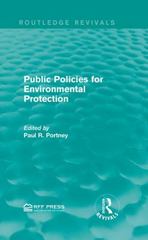Answered step by step
Verified Expert Solution
Question
1 Approved Answer
i. A competitive refining industry produces one unit of waste for each unit of refined product. The industry disposes of the waste by releasing it
i. A competitive refining industry produces one unit of waste for each unit of refined product. The industry disposes of the waste by releasing it into the atmosphere. The inverse demand curve for the refined product (which is also the marginal benefit curve) is = 24 - Q, where Q is the quantity consumed when the price consumers pay is . The inverse supply curve (also the total private cost curve) for refining is TPC = 2Q + 2, where TPC is the total private cost when the industry produces Q units. The total external cost curve is TEC = 0.5Q, where TEC is the total external cost when the industry releases Q units of waste. a. What are the equilibrium price and quantity for the refined product when there is no correction for the externality? b. How much of the chemical should the market supply at the social optimum? c. Suppose the government imposes an emissions fee of GhcT per unit of emissions. How large should the emissions fee be if the market is to produce the economically efficient amount of refined product
Step by Step Solution
There are 3 Steps involved in it
Step: 1

Get Instant Access to Expert-Tailored Solutions
See step-by-step solutions with expert insights and AI powered tools for academic success
Step: 2

Step: 3

Ace Your Homework with AI
Get the answers you need in no time with our AI-driven, step-by-step assistance
Get Started


